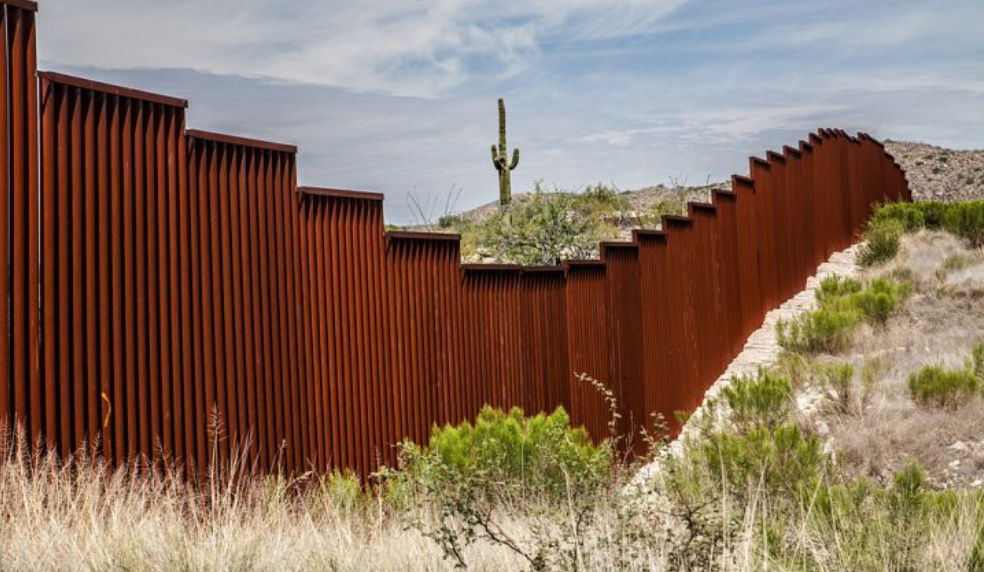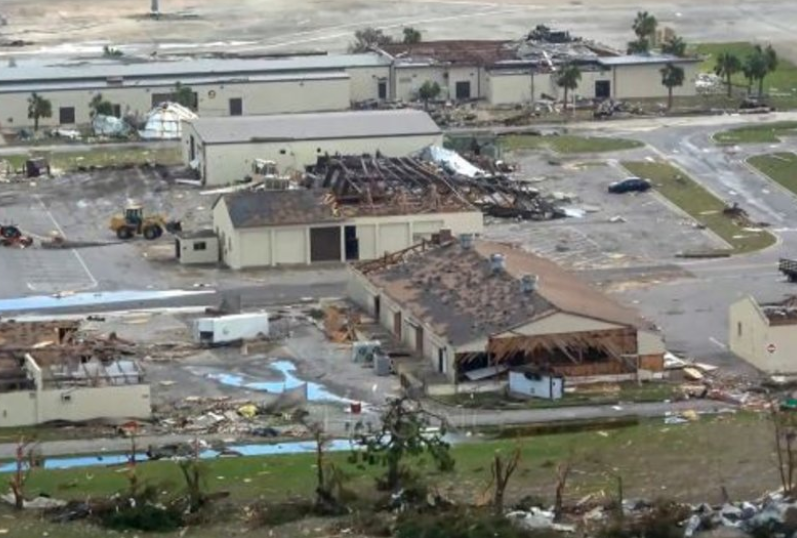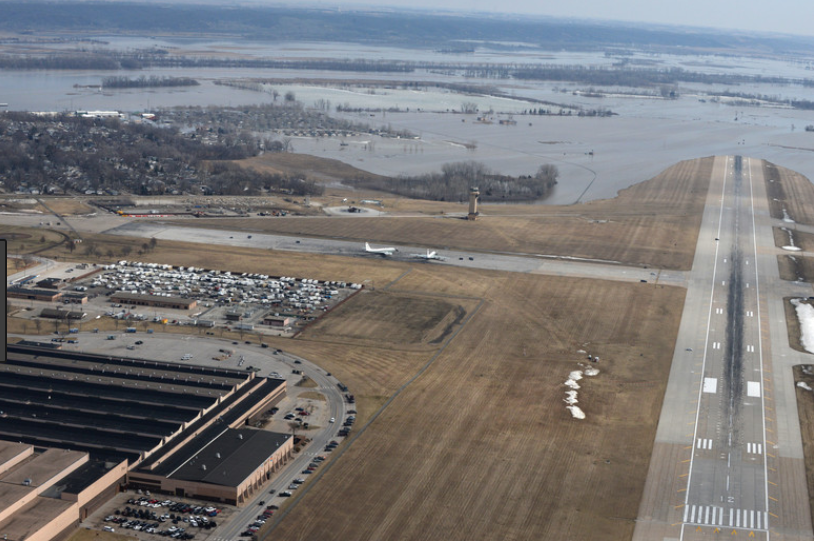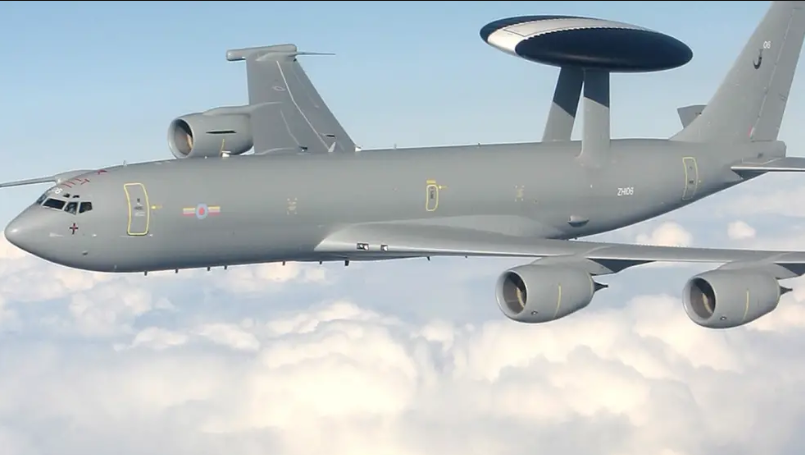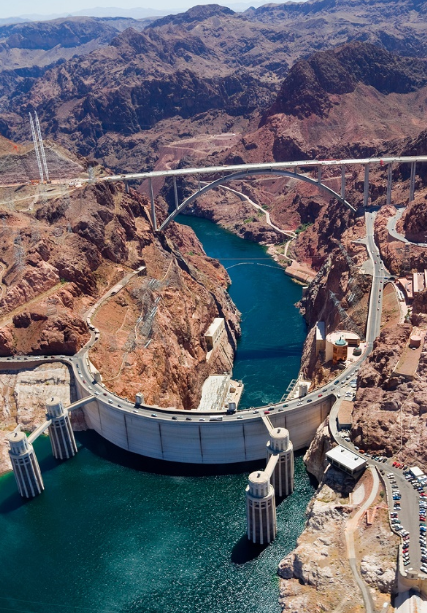
Rick Mills – “$1B for Trump’s Border Wall Could Fix Crumbling Military Bases”
US military families will continue to stay in run-down accommodations while they visit their soldier sons and daughters. The Air Force won’t be able to rebuild two bases flattened by a hurricane and a flood. Trainee pilots will be shorted thousands of hours of flight time, because the money isn’t in the budget.
Those are just a few consequences of a very stupid decision by US President Donald Trump to yank $3.6 billion from the Pentagon’s funding and put it towards his border wall. The first $1 billion was allocated on Tuesday, to go towards 57 miles of 18-foot-high fencing along the Yuma and El Paso sections of the border.
The controversial move was announced this week following Trump’s veto of Congress’ resolution to reject his national emergency declaration to build more border wall.
The House of Representatives passed the resolution of disapproval in February, then Republican and Democratic Senators joined forces to pass it, meaning Trump’s request for $8.6 billion in border wall money was refused.
However according to the US legislative process, the President may veto a bill that passes both Houses of Congress, which is what Trump did one day after the rejected emergency declaration cleared the Senate. Under the rules, the House of Representatives has one more chance to over-ride the President if two-thirds agree to do so, but in this case the vote was 248-181 – the upshot being that Trump’s veto holds and his National Emergency Declaration passes.
The Pentagon has the power to build fences and take other measures to support federal law enforcement agencies trying to stop drug trafficking. Trump has been pushing for a border wall since campaigning against illegal immigration in 2016.
Whether or not you support the wall, most can probably agree that using funds allocated to the military for a purpose other than defense is a bad idea.
The military is dead set against it. According to a media report the House Armed Services Committee wrote to the Defense Department saying it has denied the Pentagon’s request. It’s unclear what will happen from here, although it’s been reported that there is nothing Congress can do to stop the Pentagon from transfering up to $4 billion across budget accounts.
What we do know is that the US Air Force is in dire need of funding for bases that were hammered by recent bad weather, and just general deterioration.
This article takes a look at the North American infrastructure deficit from a different angle – its effect on our militaries. Considering we are in the beginning stages of a Cold War between the US, Russia and China, it’s the wrong time to be under-funding the military. And another reason why the United States government needs to take a hard look at the metals it lacks. The US Military is number one despite having virtually no rare earths of its own (other than one light rare earths mine in California) that go into a plethora of defense applications, no production of manganese necessary for steel, no domestic vanadium or titanium used in fighter aircraft, and 100%-reliant on metallurgical-grade bauxite used for aluminum.
An expanded list of 35 minerals was published by the Department of the Interior alongside an Executive Order by President Trump, for the Commerce Department to come up with a strategy for America to reduce its reliance on critical minerals. I’m not holding my breath. This problem has been ignored for decades. America needs to start mining again to reduce reliance on imported metals in the same way the US has become a net exporter of oil through break-neck shale oil production.
$5 billion needed for bases
It seemed that Trump was on board with finding critical minerals but now the erratic Commander-in-Chief has raided the military to fund his beloved wall – in a strategy that looks straight out of ‘House of Cards’. (In the Netflix series, Kevin Spacey’s character, Frank Underwood, orchestrates an energy crisis to get himself appointed President).
Clearly the wall is a higher priority for Trump than:
- Security of supply regarding critical metals
- Health and welfare of military personnel
- The state of the country’s military readiness ie. training
- It’s ability to sustain the fight
The US Air Force is crying theft, arguing that it needs $5 billion to rebuild bases in Florida and Nebraska. Hurricane Michael destroyed most of the Tyndall base when it slammed into the Florida Panhandle in October, while the base in Offutt was inundated by an overflowing Missouri River that damaged nearly 80 buildings.
Tyndall AFB
Offutt AFB
If $1.2 billion in funding doesn’t come through by August, the Air Force will have to cut elsewhere (projects in 18 states are on the chopping block) and reduce 18,000 pilot training hours, Defense One reported.
“We desperately need the supplemental funding to recover from the natural disasters that hammered Tyndall and Offutt,” Air Force Secretary Heather Wilson said Wednesday at a Heritage Foundation event in Washington. “There are other decisions we’ll have to make if we don’t [have supplemental funding] by May or June. These are just the first decisions that we had to make yesterday…61 projects in 18 states are not going to happen because we have not gotten a disaster supplemental for Tyndall.”
Those are just the immediate needs. Another article by Defense One uncovers a startling backlog of deferred maintenance of military infrastructure that extends to 2047! This is due to chronic underfunding since 2012. It’s hard to believe the Department of Defense has a problem funding anything; its nearly $1 trillion allowance is the largest item in the federal budget behind Social Security. The DoD’s base budget for 2019-20 is $576 billion.
Yet according to Defense One, combined spending on military construction and family housing is nearly half what it was in 2012, $14.6 billion, versus an annual average of $8.2 billion from 2015 to 2018.
The Pentagon rates 23% of its infrastructure is in poor condition and another 9% is failing. Some of it is in such rough shape, it’s not worth saving.
Not just a flesh wound
The politicians in the DoD claim that the billion-dollar funding shift won’t interfere with military readiness.
“Military construction on the border will not come at the expense of our people, our readiness, or our modernization,” Acting Defense Secretary Patrick Shanahan told the House Armed Services Committee on Tuesday.
Yet five bombers will be grounded come September due to cuts in aircraft repair funding, and maintenance of E-3 AWACS radar planes will be delayed.
Perhaps Trump should re-consider his threat to pull out of the INF intermediate-range nuclear and conventional weapons treaty now that he has in effect set an arms race in motion between the US, Russia and China, yet is underfunding military bases. The trend is towards smaller, more nimble bases from large ones but the transition will cost big bucks.
Defense One states:
While the military succeeded in maximizing efficiency through two decades of aggregating forces into peacetime superbases in Germany, Japan, and South Korea, those superbases now serve as juicy, fat targets for advanced adversary missiles and aircraft. China practices first-day-of-war knockout strikes against the colossal collection of U.S. naval forces in Yokosuka, Japan, and Russian missiles threaten every American base in mainland Europe.
The 2018 National Defense Strategy recognizes that existing peacetime basing strategy is no longer appropriate, prompting the Pentagon to prioritize “transitioning from large, centralized, unhardened infrastructure to smaller, dispersed, resilient, adaptive basing that includes active and passive defenses.” Based on the cost of initial investments at U.S. bases in Europe and East Asia, this overdue transition will carry a multi-billion dollar price tag over the next five to 10 years.
I have to ask you, ‘does stealing US$3.6 billion from the Pentagon to build a wall make sense?’ Let’s continue…
Civilian infrastructure gap
Of course the military infrastructure gap is but one chapter in a long story of not enough spending on public buildings, railways, ports, etc., not only in the US but across the world.
There is an undeniable connection between the quality of a country’s competitiveness and its infrastructure yet both Canada and the US are facing significant infrastructure deficits, meaning the money that is being allocated for upgrades to water lines, sewers, bridges, roads, dams, power plants, public buildings, etc., isn’t enough to cover maintenance, let alone replacement costs.
In 2016 the Canadian Infrastructure Report Card rated one-third of municipal infrastructure in fair, poor or very poor condition, and at risk of service disruption.
Out of $1.1 trillion in assets, roads and water pipes/ sewers were deemed to be in worst shape. To replace all of it – roads, water infrastructure, bridges, sports and recreation facilities, public buildings and transit – would cost taxpayers $80,000 per household. The Federation of Canadian Municipalities says Canada would need to have spent $123 billion over the last few decades to meet current infrastructure needs. With not enough money allocated, the gap is growing by $2 billion a year.
Like Canada, the US gets a fail on infrastructure spending; the 2017 Infrastructure Report Card scored a D+. Since 1998, US infrastructure has consistently earned D averages.
According to the American Society of Civil Engineers, over the last four years (when the last report card came out), there has been no improvement in bridges, roads, drinking water, energy, aviation and dams. The society estimates it will take $4.6 trillion by 2025 to bring US infrastructure up to an acceptable standard.
The global infrastructure gap is estimated to be $40 trillion by 2040, a mind-boggling figure. Reuters breaks it down to $3.7 trillion a year that needs to be invested in infrastructure to meet demand – an amount equivalent to the annual economic output of Germany, the world’s fourth largest economy.
Infrastructure metals
Infrastructure is the physical systems – the roads, power transmission lines and towers, airports, dams, buses, subways, railways, ports, bridges, power plants, water delivery systems, hospitals, sewage treatment, etc. – that are the building blocks, the Lego pieces, that fuel a country’s, city’s or community’s economical, social and financial development.
Economic growth necessitates building more infrastructure to meet increasing demand on power, heat, water, roads and the like. As populations grow, they need more houses, hospitals, subway lines, roads, recreational facilities, sports stadiums.
The amount of pipe rehabilitation, the number of dams that need to be upgraded, new ports, airports, bridges, power plants etc., will require billions of tonnes of raw materials. We’re talking iron ore, steel, zinc, manganese, vanadium and copper, just to name a few key metals.
Let’s take a closer look at some key infrastructure metals.
Aside from iron, manganese is the most essential mineral in the production of steel. You can’t produce steel without adding 10 to 20 pounds of manganese per ton of iron, making manganese the fourth most traded metal commodity.
Both Canada and the United States have numerous and vast iron ore deposits, yet neither country produces manganese.
Building new North American infrastructure would obviously take a lot of steel. It’s hard to say how much, but consider these facts: The Hoover Dam on the Arizona-Nevada state line used 45 million pound of reinforces steel, 88 million pounds of plate steel and outlet pipes, 6.7 million pounds of pipe and fittings, and 4.4 million yards of concrete.
The Golden Gate Bridge contains about 88,000 tons of steel, and 80,000 miles of wire inside each of the two steel cables. That’s enough wire to go around the world three times.
Zinc is mostly used in steel fabrication to prevent rusting; it is an essential component of galvanized steel bridges.
Rare earths are used in a variety of industrial applications. Updating Internet speeds to 5G using fibre-optics requires erbium for the fiber. Computers that will go into new schools and public buildings contain europium. REEs are used in metallurgy as an alloying agent to desulfurise steels, as a nodularising agent in ductile iron, and as alloying agents to improve the properties of magnesium, aluminium and titanium alloys.
Copper is used for electrical applications because it is an excellent conductor of electricity. That, combined with its corrosion resistance, ductility, malleability, and ability to work in a range of electrical networks, makes it ideal for wiring. Among electrical devices that use copper are computers, televisions, circuit boards, semiconductors, microwaves and fire prevention sprinkler systems.
In telecommunications, copper is used in wiring for local area networks (LAN), modems and routers. The construction industry would not exist without copper. The red metal is also used for potable water and heating systems due to its ability to resist the growth of water-borne organisms, as well as its resistance to heat corrosion.
Conclusion
The worldwide infrastructure deficit is looming large, with seemingly no solution in sight. It’s every country’s problem – a yawning gap between what is being spent, and what should be spent – that in about 20 years will reach $40 trillion.
Instead of preparing for another Cold War, with the US having to buy from its adversaries, Russia and China, the metals it doesn’t have, to put into its weaponry, wouldn’t it be better to put the billions it takes to build weapons nobody ever wants to use, into something useful like infrastructure?
There would still be conflicts over who has what metals, how much they cost, and how to discover and mine them, but at least we will be spending it on something that benefits humanity.
It’s the same thing with Trump’s wall. He asked Congress for, but didn’t get, close to $9 billion he said he needs for the wall. Close to $4 billion is earmarked to be moved from the Department of Defense budget to wall construction. At least the money isn’t being taken out of Social Security or the Health budget. But it’s still an incredible waste of money to fix a problem that actually doesn’t exist.
Most illegal immigrants do not sneak across the border. Two-thirds of undocumented immigrants entered the US legally, according to Forbes, adding that a recent study found 58% of Americans are opposed to a border wall. To build or not to build is outside the scope of this article, but the infrastructure deficit and how to fix it is.
The answer is to A/ allocate the billions needed to bridge the infrastructure spending gap and B/ find the materials to do so. For those North America has, it’s a matter of ramping up production to meet the demand. The metals we don’t have is much more complicated. We need to stop buying infrastructure metals from countries we can’t trust and shouldn’t be doing business with.
The US is dependent on South Africa, the politically unstable Democratic Republic of Congo (DRC) and an increasingly unreliable and aggressive China for over half of its supply of what it considers strategic or critical minerals.
China mines or processes 95% of the world’s rare earths and is also the dominant supplier of antimony, indium, tellurium and tungsten, for example.
Reducing the dependence is hard, but it’s not impossible. We need to decide, are we going to stay dependent on foreign countries with asymmetrical interests to our own such as China, South Africa and Russia, or are we going to become independent, by mining and processing metals ourselves, here in North America?
I suggest that mining domestically and gaining full control of our infrastructure needs – both military and civil – is the only way to go.
Richard (Rick) Mills
Ahead of the Herd Twitter
Ahead of the Herd FaceBook
Legal Notice / Disclaimer
This document is not and should not be construed as an offer to sell or the solicitation of an offer to purchase or subscribe for any investment. Richard Mills has based this document on information obtained from sources he believes to be reliable but which has not been independently verified. Richard Mills makes no guarantee, representation or warranty and accepts no responsibility or liability as
to its accuracy or completeness. Expressions of opinion are those of Richard Mills only and are subject to change without notice. Richard Mills assumes no warranty, liability or guarantee for the current relevance, correctness or completeness of any information provided within this Report and will not be held liable for the consequence of reliance upon any opinion or statement contained herein or any omission. Furthermore, I, Richard Mills, assume no liability for any direct or indirect loss or damage or, in particular, for lost profit, which you may incur as a result of the use and existence of the information provided within this Report.
MORE or "UNCATEGORIZED"
Reunion Gold Infill Drilling Continues to Expand the Zone of High-Grade Gold Mineralization on Block 6 at its Oko West Project, Guyana
Highlights include: Hole D-375 intersecting 60.4 m @ 1.50 g/t Au,... READ MORE
Great Pacific Gold to Acquire Papua New Guinea Focused Tinga Valley Copper & Gold Corp.
Highlights: 347 sq km granted exploration license located 140 km ... READ MORE
i-80 Gold Announces High-Grade Results from Underground Drilling at Cove
New results include 29.6 g/t Au over 7.2 m, 18.7 g/t Au over... READ MORE
Calibre Intercepts High-Grade Gold & Silver Mineralization from Several Targets at its Eastern Borosi Mine Complex; Drilling Intersects Include 10.81 g/t Gold over 3.4 metres, 9.64 g/t Gold over 3.3 metres, 1,431.6 g/t Silver over 2.9 metres and 642.3 g/t Silver over 5.0 metres
Calibre Mining Corp. (TSX: CXB) (OTCQX: CXBMF) is pleased to anno... READ MORE
SILVER VIPER CLOSES FIRST TRANCHE OF LIFE OFFERING
Silver Viper Minerals Corp. (TSX-V: VIPR) (OTC: VIPRF) is please... READ MORE












